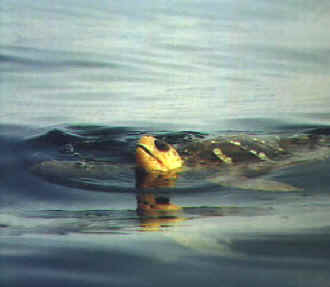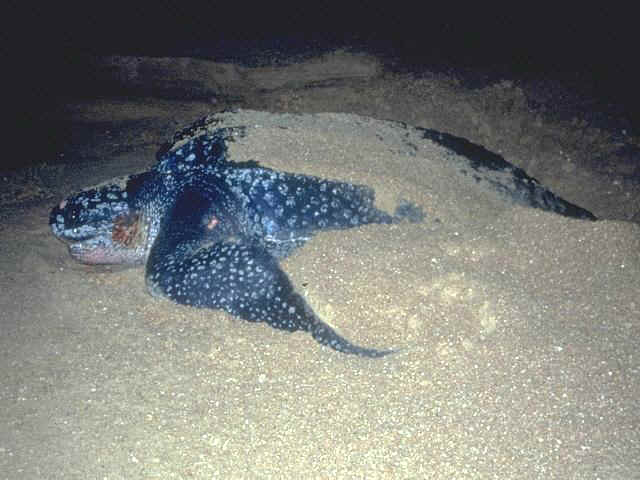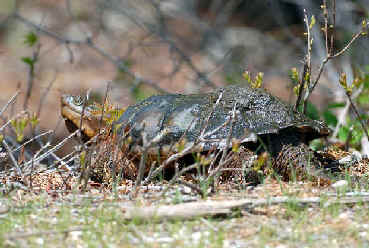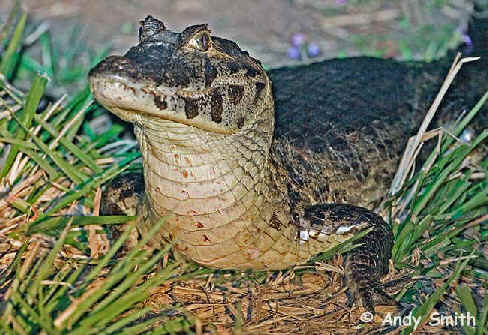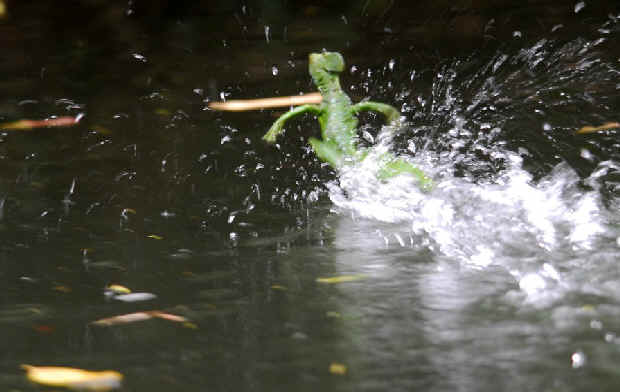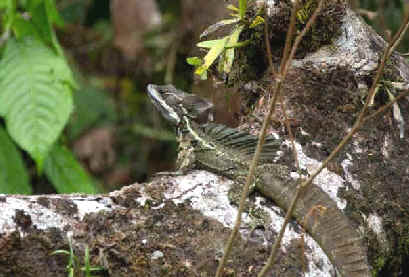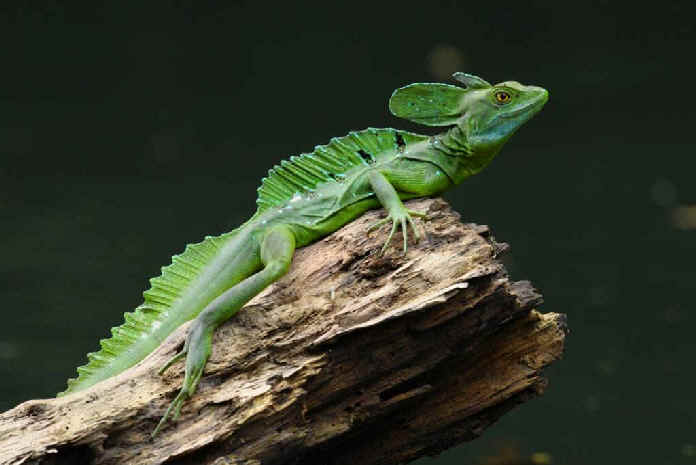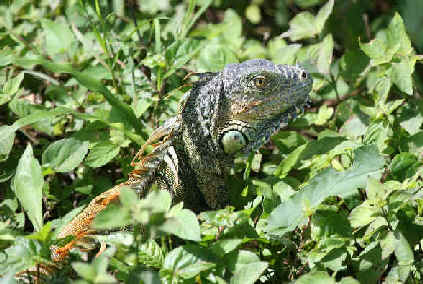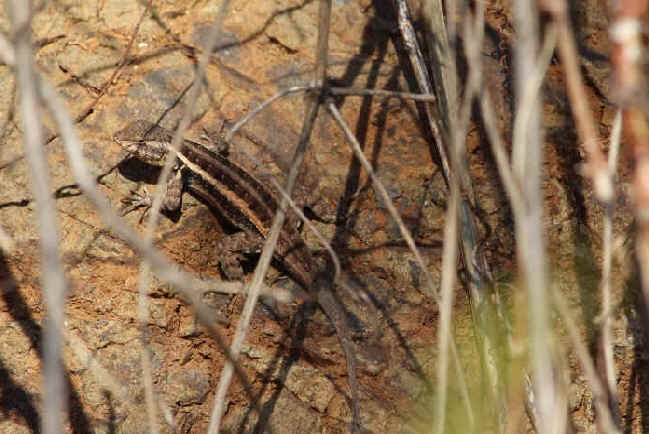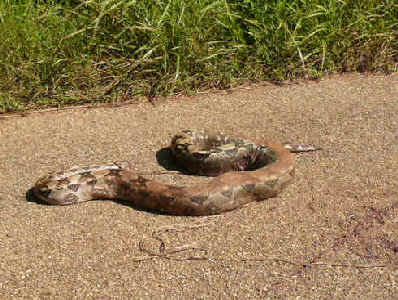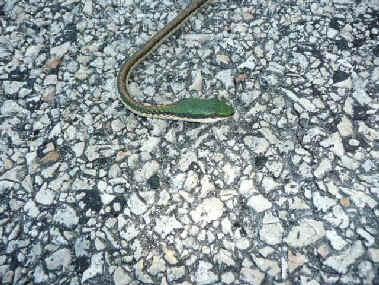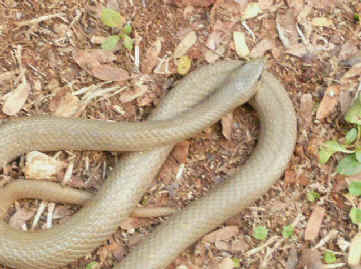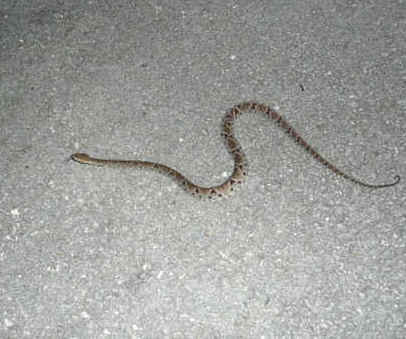
E-mail: font@focusonnature.com
Phone: Toll-free in USA 1-888-721-3555
or 302/529-1876
 |
PO Box 9021,
Wilmington, DE 19809, USA E-mail: font@focusonnature.com Phone: Toll-free in USA 1-888-721-3555 or 302/529-1876 |
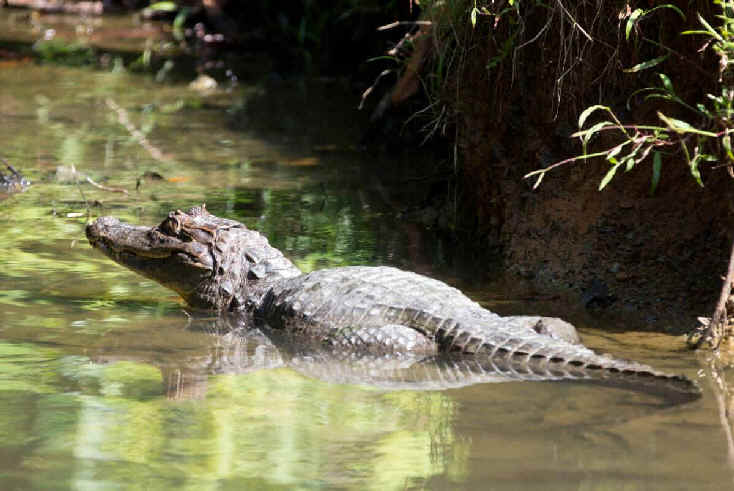 Amphibians
Amphibians
and Reptiles
of Costa Rica
and Panama
Noting those found during
Focus On Nature Tours with an (*)
including:
Salamanders
Toads & Frogs (seen or heard),
Turtles
Lizards
Snakes
A list compiled by Armas Hill
UPPER RIGHT PHOTO: A SPECTACLED CAIMAN
photographed during the FONT tour
in southern Costa Rica in March 2012 (photo by Virginia
Woodhouse)
Links within this List:
AMPHIBIANS: Caecilians
Salamanders Toads & Frogs
REPTILES: Turtles
Crocodile &
Caiman Snakes
Lizards:
Geckos Basilisks
Iguanas Anoles
Whiptails
Other Links:
Upcoming
FONT Birding & Nature Tours in Central America
Birds in: Costa Rica Panama
Mammals
& some Other Wildlife in Costa Rica (with some photos)
A
List of Central American Butterflies & Moths, in 6 Parts (with
some photos)
Directory of Photos in this Website
Codes:
(*): seen,
or heard, during FONT tours
a: sometimes (in southern CR) seen
from a low-flying airplane
b: after dark, at a nesting site on a
CR beach. Also, at times, hatchlings seen.
Threatened species, designated in the
IUCN Red Data List:
t1: critically endangered (some
possibly extinct)
t2: endangered
t3: vulnerable
CR: Costa Rica
PN: Panama
In Costa Rica:
A: Atlantic, or Caribbean, side of
the country
P: Pacific side of the country
NP: the northern Pacific side
SP: the southern Pacific side
H: in the highlands
N: in northern Costa Rica
S: in southern Costa Rica
(xcd): recording on the CD "Vocalizations of Frogs & Toads from
the Barro Colorado Nature Monument, Soberania National Park and adjacent
areas" (in central Panama), by Roberto Ibanez D., A. Stanley Rand, Michael
J. Ryan, & Cesar A, Jaramillo.
The "x" above refers to the number noted below of the numerical
position on the CD.
(ph): species with a photo in the FONT website
AMPHIBIANS:
Family CAECILIAIDAE (Caecilians)
Alvarado’s
Salamander ______ CR
Bolitoglossa alvaradoi
Ridge-headed
Salamander ______ CR
Bolitoglossa colonnea
Bark-colored
Salamander ______ CR
Bolitoglossa lignicolor
Ring-tailed
Salamander ______ CR
Bolitoglossa robusta
Striated
Salamander ______ CR
Bolitoglossa striatula
Mountain
Salamander ______ CR
Bolitoglossa subpalmata
Worm
Salamanders ______ CR
Oedipina species
Order ANURA (Frogs & Toads)
Family RHINOPHRYNIDAE (Mexican
Burrowing Toad)
Mexican
Burrowing Toad ______ CR
Rhinophrynus dorsalis
|
Family BUFONIDAE (Toads)
Chiriqui
Harlequin Frog ______ CR
Atelopus chiriquiensis
Variable Harlequin Frog ______ CR,PN
Atelopus
senex
______ CR
All 3 species of Atelopus have disappeared from areas in CR where they were
once common, and may now be extinct.
Crepidophryne epiotica ______ CR
Dry
Bufo coccifer
Green Climbing Toad (4cd) (*) ______ CR,PN
Smooth-skinned Toad (6cd) ______ CR,PN
Giant Toad (2cd) (*) ______ CR,PN
Golden Toad ______ CR
Bufo fastidiosus ______ CR
Bufo holdridgei ______ CR
Gulf
Coast Toad (ph) ______ CR
Bufo valliceps
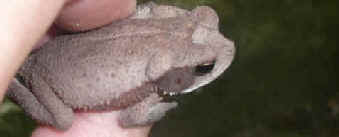
A Gulf Coast Toad during a FONT tour
Bufo
granulosus (3cd) ______ PN
Bufo
typhonius (5cd) ______ PN
Ghost
Glass Frog ______ CR
Centrolenella ilex
Emerald
Glass Frog (10cd) ______ CR,PN
Centrolene prosoblepon
Ilex
Grass Frog ______ PN
Centrolene ilex
Granular
Glass Frog (8cd) ______ PN
Cochranella granulosa
Cochranella
spinosa (7cd) ______ PN
Cochranella
euknemos (8cd) ______ PN
Diane's Bare-hearted Glass Frog ______ CR
Fleischmann’s
Glass Frog (12cd) ______ CR,PN
Hyalinobatrachium fleischmanni
Reticulated
Glass Frog ______ CR,PN
Hyalinobatrachium valerioi
Hyalinobatrachium
pulveratum (11cd) ______ PN
Hyalinobatrachium
colymbiphyllum (13cd) ______ PN
Family DENDROBATIDAE (Poison-dart
Frogs, or Poison-arrow Frogs)
Talamanca
Rocket (or Dart) Frog (15cd) ______ CR,PN
Colostethus talamancae
Colostethus nubicola
Colostethus
inguinalis (14cd) ______ PN
Colostethus
flotator (16cd) ______ PN
Yellow-bellied
Dart Frog ______ PN
Minyobates tulguritus
Minyobates
minutus (17cd) ______ PN
Green-and-black
Poison-dart Frog (18cd) (*) (ph) ______ CR,PN
Dendrobates auratus
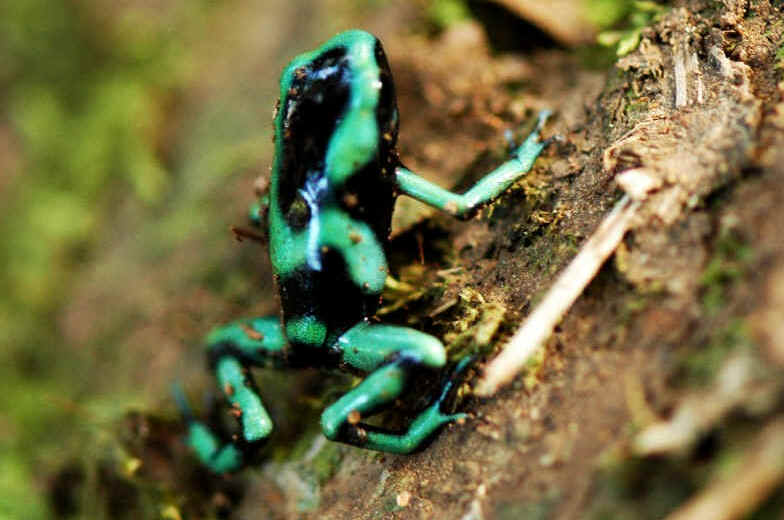
Green-and-black Poison-dart Frog
Granular
Poison-dart Frog (*) ______ CR
Dendrobates grannuliferus
Strawberry
Poison-dart Frog (*) ______ CR,PN (“Blue-jeans
Frog”)
Dendrobates pumilio
(Yellow-)
Striped Poison-dart Frog ______ CR,PN
Phyllobates lugubris
Golfo Dulce Poison-dart Frog (*) ______ CR
Red-eyed (or Gaudy) Tree Frog (19cd) (*) (ph) ______ CR,PN
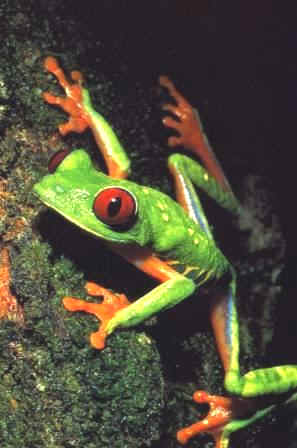
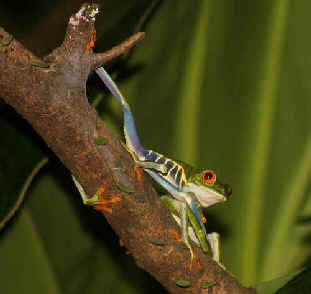
Parachuting Red-eyed Leaf Frog ______ CR
Spurell’s
Flying Frog ______ PN
Agalychnis spurellii
Barred
Leaf Frog ______ PN
Agalychnis calcarifer
Crowned
Tree Frog ______ CR,PN
Anotheca spinosa
Lemur
Frog ______ PN
Phyllomedusa lemur
Red-eyed
Stream Frog ______ CR
Duellmanohyla
Hourglass
(or Variegated) Tree Frog (25cd) ______ CR,PN
Hyla ebraccata
Loquacious
Tree Frog ______ CR
Hyla loquax
Small-headed
Tree Frog (27cd) ______ CR,PN
Hyla microcephala
Lowland
Fringe-limbed Tree Frog ______ CR
Hyla miliaria
Veined
Tree Frog (26cd) ______ CR,PN
Hyla phlebodes
Gladiator
Tree Frog (23cd) ______ CR,PN
Hyla rosenbergi
Red-webbed
Tree Frog (21cd) ______ PN
Hyla rufitela
Meadow
Tree Frog ______ CR,PN
Hyla pseudopuma
Boans
Tree Frog (22cd) ______ PN
Hyla boans
Hyla
palmeri (20cd) ______ PN
Hyla
crepitans (24cd) ______ PN
Milk Frog (cd32) ______ CR,PN
Olive
Tree Frog ______ CR,PN
Scinax elaeochroa
Stauffer’s
Tree Frog (28cd) ______ CR,PN
Scinax staufferi
Boulenger’s
Snouted Tree Frog (31cd) ______ CR,PN
Scinax boulengeri
Scinax
ruber (29cd) ______ PN
Scinax
rostratus
(30cd) ______ PN
Mexican
Tree Frog (or Smilisca) ______ CR
Smilisca baudinii
Masked
Tree Frog (or Smilisca) (33cd) ______ CR,PN
Smilisca phaeota
Drab
Tree Frog (or Smilisca) ______ CR
Smilisca sordida
Pug-nosed Tree Frog
Bransford’s
Litter Frog ______ CR,PN
Eleutherodactylus bransfordii
Clay-colored
Rain Frog (38cd) ______ CR,PN
Eleutherodactylus cerasinus
Golden-groined
Rain Frog ______ CR
Eleutherodactylus cruentus
Common
Tink Frog (41cd) ______ CR,PN
Eleutherodactylus diastema
Common
Rain Frog (37cd) ______ CR,PN
Eleutherodactylus fitzingeri
Broad-headed
Rain Frog ______ CR
Eleutherodactylus megacephalus
Mimicking
Rain Frog ______ CR
Eleutherodactylus mimus
Noble’s
Rain Frog ______ CR
Eleutherodactylus noblei
Pygmy
Rain Frog (39cd) ______ CR,PN
Eleutherodactylus ridens
Soft-shouldered
Rain Frog (36cd) ______ PN
Eleutherodactylus crassidigitus
Brown-headed
Rain Frog ______ PN
Eleutherodactylus hiporcatus
Agua
Buena Robber Frog (42cd) ______ PN
Eleutherodactylus vocator
Piglet
Litter Frog ______ PN
Eleutherodactylus podiciferus
Eleutherodactylus
bufoniformis (35cd) ______ PN
Eleutherodactylus
taeniatus (40cd) ______ PN
Eleutherodactylus
antillensis (43cd) ______ PN
Eleutherodactylus
johnstonei (44cd) ______ PN
Black-backed
Frog ______ CR(A), PN
Leptodactylus melanonotus
Central American Bullfrog (45cd) ______ CR(A),PN
White-lipped
Whistling-Frog (49cd) ______ CR,PN
Leptodactylus labialis
Bolivian
Frog ______ CR,PN
Leptodactylus bolivianus
Leptodactylus
insularum (46cd) ______ PN
Leptodactylus
poecilochilus (47cd) ______ PN
Leptodactylus
fuscus (48cd) ______ PN
Tungara
(or Mud Puddle) Frog (50cd) ______ CR,PN
Physalaemus pustulosus
Pleurodema
brachyops (51cd) ______ PN
Chiasmocleis
panamensis (52cd) _______ PN
Family MICROHYLIDAE (Narrow-mouthed
Frogs)
Sheep
Frog ______ CR
Hypopachus variolosus
Black
Narrow-mouthed Frog ______ CR,PN
Nelsonophryne aterrima
Family RANIDAE (True Frogs)
Vaillant’s
Frog (53cd) ______ CR,PN (also
called Web-footed Frog) (in CR, widespread & common)
Rana vaillanti (formerly known
as Rana palmipes)
Green-eyed
Frog ______ CR (H)
Rana vibicaria
Brilliant
Forrer’s
Leopard Frog ______ CR(NP)
Rana forreri
Taylor’s Frog ______ CR
